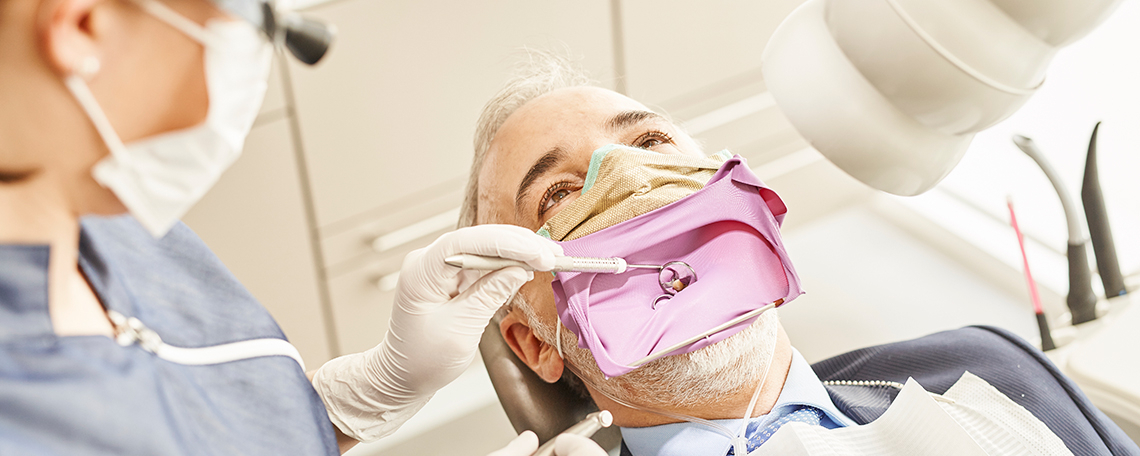Amalgam removal
The safe way to remove harmful heavy metals
Amalgam fillings can have serious consequences for our health, from burning mouth syndrome, a metallic taste in the mouth, fatigue, dizziness and neuralgia up to rheumatism, unexplained pain and other serious conditions. Acute complaints only present rarely. However, the alloy of mercury, tin, silver, copper and zinc is broken down by saliva and abraded during eating or when grinding your teeth in your sleep, thus – as saliva tests have proven – constantly releasing metal toxins, which spread throughout the body and can result in the development of chronic diseases.
Find out more about the effects heavy metals in the mouth can have on the human body and the associated risks.
Here at INTEGRA, we start by analysing what quantity of which metals you currently have in your body. This allows us to select the treatment method best suited to you.
An overview of our diagnostic procedures:
- Saliva test
- Lymphocyte transformation test (LTT)
- Urinalysis
- Vitamedscan (photospectrometry)
We then remove the amalgam fillings as minimally invasively as possible and in individual stages, employing additional detox measures in parallel if and as necessary. During the treatment itself, you can rely on optimal safety measures in line with the latest knowledge in the field.
First-rate protective measures – for your safety:
1. Gold-coated surgical mask:
Gold binds mercury – this special protective measure allows us to ensure that no mercury vapours enter your airways through your nose.
2. Dental dam:
The rubber-like cloth covers the remainder of the oral cavity, leaving only the operative site accessible – this prevents excavated pieces of amalgam from being swallowed or coming into contact with the oral mucosa.
3. Vaporised mercury vacuum:
This ultra-modern suction device allows us to collect the mercury vapours that are produced during amalgam removal in special filters.
4. Amalgam drills:
We use special tungsten carbide drills in order to reliably avoid small, powder-like pieces of amalgam, which in turn can produce mercury vapours.
5. Nasal cannula:
During the amalgam removal procedure, we administer medical-grade oxygen via a nasal cannula – this ensures that you do not inhale any mercury vapours from the ambient air.
6. Activated charcoal rinse:
The sulphur-containing solution rinses away any remaining pieces of mercury.
7. Administering of mercury-binding preparations:
With this additional measure, we help you expel harmful substances from your body.







